- Home
- Deborah Blum
The Best American Science and Nature Writing 2014 Page 2
The Best American Science and Nature Writing 2014 Read online
Page 2
So there you have the slightly alarmed science writer standing in a dirt cloud. Let’s leave her there for the moment. There’s a reason those blowing particles still drift through my memory. Who doesn’t remember those edgy moments when you really wish you’d been standing somewhere else? But this moment also serves as a different kind of reminder. That everything—including a haze of windblown dust—is something more, holds a story worth telling.
“To see the world in a grain of sand,” wrote the nineteenth-century British poet William Blake in a poem with the lovely title “Auguries of Innocence.” I do not mean to claim anything so grand for the point I am making here. But perhaps I can make a case for a small metaphor. This is the natural world reshaped by our activities—a stretch of desert still radioactive because over this dusty terrain we developed, tested, and demonstrated our theories of atomic destruction. Here in this blowing dust is a story of science with all its human determination and innovation—and its occasional hubris. If told right, it’s a great story, one that reminds us of all the unexpected complications that often come with scientific advances. In the best science stories, or so I believe, one often sees the arc of the choices we’ve made as a species to build and create—and occasionally to destroy.
In the stories we tell, the ones that really do justice to the scientific process, we show our readers that arc—the curving, complicated line that links discovery and development, choice and consequence. It sounds like such a simple thing. But it’s when we connect the dots that we can connect with our readers in a richer sense. We remind them of the role that research and its results play in their own lives. And we remind them that scientific exploration of the world around us can reveal a portrait of connected lives on a tiny and far too fragile planet. An essay in this book, “Trapline,” by David Treuer, an Ojibwe writer, makes that point eloquently. There’s a moment in the story when he’s holding down an unconscious fox: “I felt the quickness of his breath as I knelt on him with one knee. With one hand on his head and the other on his chest, I felt his heart and the life in it.” And even unconscious, the fox’s fear knocks against Treuer’s hand. “Who knew that a heart could beat that fast?” And he goes on to recognize that in such a place, his own heart might do the same.
The science writers whom I admire bring such connections to singing, stinging life. They remind us that this is ever a human exercise—that scientists, like the rest of us, are just people trying to understand the world around us. They never forget that, as with any human enterprise, mistakes are made and opportunities lost. But they also remind us that at its best, the community of science is one that works to correct its errors, that seeks to make the world right and even better. In today’s best science writing you find all of that—the stumbles and the hopes, the unexpected ideas and unexpected beauty. And you find it across an almost limitless spectrum of hard questions, fascinating ideas, sometimes unexpected answers. Even within the limits of this anthology, I can promise you stories that range from the shimmer of deep space to the wayward nature of a wild sheep.
It’s been both a pleasure and a humbling experience to read and select the science stories for this anthology. I want to thank The Best American Science and Nature Writing’s series editor, Tim Folger, for doing the searching and sifting that produced an amazing selection of articles for me to read. Tim has a wonderful eye for a story that matters. The time I spent reading through the selections brightened some ice-gray winter days in my home state of Wisconsin—which will tell you how good they were, because this last winter was very gray and very icy.
So it was difficult to winnow down to the twenty-six stories in this book. They are an eclectic mix, on a variety of subjects—yes, ranging from sheep to stars—in publications including well-established magazines, such as National Geographic, and newly created digital ones, such as Nautilus and Medium. For a longtime science writer like myself, it’s reassuring to be reminded that such work continues at traditional outlets, and it’s equally exciting to see the rise of innovative new outlets. All of them produced stories that challenged me to think in new ways about science and how it changes the world.
I believe the best science writing does exactly that—encourages us to think and rethink, puts us on a path toward change at a time when we need to take such a path, as the landscape itself changes around us. Some of these stories brought a different perspective to a long-standing issue like climate change (think about the appearance of new hybrid species); some startled me with an idea I hadn’t considered before, such as the power of television soap operas to influence birthrates in developing countries. But always they made the world more interesting; they made the journeys of the scientists themselves more real. Sometimes, of course, the science writers are themselves scientists. So you’ll find here the famed biologist E. O. Wilson, who is a two-time winner of the Pulitzer Prize for his nonfiction books. In his tale of a national park in Mozambique struggling to recover from the collateral damage inflicted by war, Wilson reminds us to look beyond the poster-child species when we consider the natural world. “People yearn to see large wild animals and I am no exception,” he says. “But wildlife also includes the little things that run the world”—a reminder that I think is exactly right, and a phrase that I love. You’ll also find the novelist Barbara Kingsolver, once a science writer herself. (In the 1980s she had a science-writing job at the University of Arizona.) Science and nature still weave their way through many of Kingsolver’s novels, and in the small, lyrical essay here, she uses knitting as a metaphor for the shifting seasons and textures of life around us: “the particular green-silver of leaves overturned by an oncoming storm. An alkaline desert’s russet bronze, a mustard of Appalachian spring, some bright spectral intangible you find you long to possess.”
There was pleasure too in discovering writers that I didn’t know so well. For instance, those sheep I mentioned. In “Twelve Ways of Viewing Alaska’s Wild, White Sheep,” Bill Sherwonit weaves together a story of sometimes luminous rock-climbing animals, the hunters who kill them, and the scientists who study them, including the sheep’s rather wonderfully shifty response to hunting season. It’s a fascinating portrait of a wild animal usually ignored in favor of the region’s more dramatic species, like grizzlies—and a portrait of us as well. Both science and self-reflection shine as well in former astronomer Pippa Goldschmidt’s essay, “What Our Telescopes Couldn’t See,” and in Sarah Stewart Johnson’s lovely “O-Rings,” a story that travels from the frozen Antarctic to the catastrophic launch of the space shuttle Challenger. As she makes that journey, Johnson threads through it a meditation on life, death, physics, and the reasons we make daredevil choices.
In many ways, these and the other pieces gathered here are stories of choices and of consequences. You’ll see that in Seth Mnookin’s “The Return of Measles.” Measles is a formidable virus. Its transmission rate can be 90 percent, and it’s durable enough to survive outside the body for some hours, meaning that everything touched by a carrier—even tables and chairs—can harbor the infection. Mnookin counts, in meticulous detail, what the ill-informed antivaccine movement may cost us in hospitalizations, deaths, and the consumption of those increasingly scarce public health dollars. You’ll see choice and consequence in Kate Sheppard’s “Under Water,” another meticulous accounting, this time of building and rebuilding on floodplains. Sheppard’s story, for Mother Jones, is about the politics and money involved in coastal building. It simmers with the frustration of scientists who keep warning about the costs of building the same homes over and over again—homes that are increasingly likely to be washed away. One study found that homes rebuilt more than once because of flood damage accounted for some 40 percent of National Flood Insurance Program payouts. “No surprise then,” Sheppard writes, “that the federal insurance program is now $25 billion in the hole.”
You’ll see choice and consequence echoing too in Amy Harmon’s tale of a Florida orange grower’s desperate quest to save his orchards f
rom a tree-crippling bacterial disease. The disease, called citrus greening, has relentlessly crept from continent to continent. Scientists have not found a single citrus species that is resistant to infection. The grower profiled by Harmon realizes that the only answer may be in genetic modification. As he pursues that goal, to save his trees, he finds himself increasingly entangled in the angry political debate that currently swirls around the issue of genetic engineering. Harmon balances the fraught politics with the science in the most rational way, debunking some of the common myths about genetic modification and letting the reader consider the choice that must eventually be made—and its consequences.
In that same regard, I want to mention Nicholas Carr’s “The Great Forgetting.” Carr explores the way that our reliance on such helpful technologies as GPS mapping makes us less reliant on our own abilities and knowledge. As we depend on the device rather than ourselves, that dependence changes us as well. I’ve long wondered about the consequences of GPS mapping because I use it every time I visit my son in Chicago and am required to drive the city’s tangle of streets. Although I’ve made numerous visits, and driven many miles there, I still have no sense of the city’s geography, and without looking at a real map can’t tell you exactly where my son’s neighborhood is. I might argue that I don’t need to, since I use GPS, but sometimes I am uneasily aware that I used to be able to visualize the cities I traveled. Carr’s point, though, is far more urgent than mine. He investigates airplane crashes in which the pilot’s overdependence on autopilot contributes to fatal errors. “We’re forgetting how to fly,” one veteran pilot says. Carr also tells us how some traditional cultures, such as the ice-hunting Inuit of Canada, have become so reliant on GPS that they’ve lost the ability to find their way on their own. They are starting to lose, as one observer puts it, their feel for the land.
Sometimes it seems that we’re always slightly behind in this game of choice and consequence. We move forward with all the excited cheer of a new technology or biological insight, and then we realize that we’ve made our move without fully considering nature’s countermove. Perhaps nothing illustrates that better than our overuse of antibiotics and the resulting tide of antibiotic resistance, told in chilling though beautiful detail in Maryn McKenna’s look toward a “post-antibiotic” future. The best of popular science writing does many things well—illuminating complicated research, forgotten corners of the earth, the worlds that lie beyond our own—in ways that make the universe itself more real to us. But I’ve come to believe that it’s the ability to see a discovery as a decision, to follow it from start to sometimes troubling, sometimes triumphant finish, that is one of the most important things we science writers bring to the story of science.
It is, of course, that very story of choice and consequence that eddies in my memory of radioactive dust, stirred into the air on that long-ago summer day.
So I’ll return you now to that afternoon, finally allowing the science writer, her photographer, and their Nevada test-site guide to leave that drift of bomb-town dust behind. Aside from wishing to be elsewhere, of course, there was nothing to do but wait for the wind to give it up. We brushed ourselves off—no doubt making sure that the dust was all over our hands—and continued the tour.
The day was sunny, our guide was reassuringly nonchalant, and we headed down a strip of narrow roadway to our next destination, which turned out to be the test site’s nuclear waste storage area. Metal barrels stamped with radiation symbols were stacked around us. I still have a slightly crackly photograph that my photographer insisted on taking. It shows a woman in her early thirties, wearing a baseball hat, T-shirt, and blue jeans, holding a traditional reporter’s notebook in one hand, looking into the camera with a slight smile. Behind her is nothing but a wall of radioactive waste barrels, piled so high that there’s no sky visible in the image.
“What were you thinking?” I say to her sometimes. But I know the answer. She was thinking what an incredible place this was, what a reminder of our atomic legacy. We’ve never really known what to do with the radioactive wastes of nuclear bombs except box them up and hide them away. Fifteen years ago the government created the Waste Isolation Pilot Plant and placed such nuclear detritus from its test facilities in a deep salt mine near Carlsbad, New Mexico. In late February of this year, a leak was reported there; thirteen workers tested positive for radiation exposure. The exposure was low, but it’s a reminder that no problem ever remains fully buried. The lesson I took away from the Nevada site, or one of them, is that sometimes the most important thing the writer does is just tell the story, bring the choice and the consequence out of hiding, so that it’s not invisible, so that we, as a society, don’t forget.
And as you can tell, I haven’t forgotten that windblown day. I haven’t forgotten because when we went through the radiation detectors on our way out, the alarms started clanging like a fire truck as my photographer passed through. I could feel my eyes go wide, and I know his were as he looked back at me. They sent him through again, and this time the alarms were silent. “Just a little glitch,” the guards manning the exit assured us, and this time I could feel my eyes narrowing. But “Just a glitch,” I repeated to the photographer as we sped back toward the casino-hotel in Las Vegas where we were staying. The desert whipped by the windows in a blur of russet and gray-green. I had my foot down on the gas because, well, I was in a hurry to get back.
“You know,” I said casually as I hopped out of the car, “I think I’ll just go take a shower.” As I recall, I said it to his back because he was already on his way. When we met for dinner, we were both shiny from soap and water. Over the chicken, though, he decided that he was still so stressed out he might just try relaxing in the glitter of the casino. That night, playing blackjack, he lost every dollar we’d brought to cover our expenses.
But that, as they say, is another story.
DEBORAH BLUM
KATHERINE BAGLEY
Mixed Up
FROM Audubon
“I LOVE GETTING huge boxes of blood,” says the genetic ornithologist Rachel Vallender as she pulls open a drawer full of small plastic vials in her laboratory at the Canadian Museum of Nature in Ottawa, where she’s a visiting scientist. Each tube, carefully labeled and organized, holds a blood sample from a single warbler. Whether the bird is actually a hybrid is the question Vallender seeks to answer.
Hybrids of golden-winged and blue-winged warblers are increasingly popping up across the Northeast and into Canada. The physical differences between the mixed progeny and their pure counterparts can be subtle. A bird might, for instance, have the distinctive yellow patches on its wings, the golden head, and the jet-black collar of a golden-winged warbler but with the yellowish belly of a blue-winged warbler. So individual scientists and conservation groups, including Audubon North Carolina and Bird Studies Canada, are gathering samples from across eastern North America and sending them to Vallender, who analyzes mitochondrial DNA in the blood to determine the birds’ genetic history. She examines the shipments she receives in free moments—on nights, weekends, and vacation days from her full-time job with Environment Canada, a government agency. The research is revealing how prevalent this intermingling of genes is and helping bring to light some of the potential dangers it poses.
Records of blue-wingeds spreading into golden-winged territory, hybridizing with them, and gradually replacing them extend back to the early twentieth century. Such mixing isn’t unusual in the avian world: nearly 10 percent of all bird species are known to occasionally interbreed. But the genetic work of Vallender, who has been studying warbler hybridization for more than a decade, backs up the observations of birders and scientists who, during the same time period, have reported growing numbers of hybrids while conducting population surveys. She’s found that in many places across the United States and Canada, hybrids now make up as much as 30 percent of golden-winged warbler populations. “This isn’t just some sporadic event anymore,” she says.
This shi
ft, says Vallender, correlates with the onslaught of climate change. Biologists have long known that habitat loss is a major factor driving blue-winged warblers to expand their range. The bird’s preferred scrubland habitat is disappearing as abandoned farmland reverts to forest. Warming temperatures might be adding additional pressures, causing blue-wingeds to move north in search of cooler climes and into habitat already occupied by golden-wingeds.
For reasons unknown, the golden-winged warblers seem to suffer more from the interaction. While blue-winged populations are experiencing declines, golden-winged populations are plummeting, and scientists are wary of the species’ chances for long-term survival. “If [this decline] continues at the rate it has been going, we could see drastic reductions in their populations or, worst-case scenario, extinctions,” says Vallender. “We need to do this research now.”
What’s happening to the two warblers isn’t unique. Polar bears and grizzly bears are mating, as are different species of everything from butterflies to sharks.
In some instances, it’s clear that climate change is playing a role. More than 1,700 animal species across the globe have shifted their ranges northward and upward in elevation, searching for colder temperatures and following as the plants and other animals they rely on shift as well. Ice sheets and other physical barriers that once kept species apart are disappearing. All of these changes are expected to accelerate as we spew ever more greenhouse gases into the atmosphere, driving up the earth’s temperature.
Climate-driven intermixing is raising challenging conservation issues. Should hybrid offspring be protected if one parent species is threatened or endangered? Ecologically, does it matter if the world loses purebred species to hybridization? Is it best to get involved or to let nature take its human-altered course, creating new species and eliminating others? These are the questions experts are just beginning to ponder, even as the planet continues to warm.

 Love at Goon Park: Harry Harlow and the Science of Affection
Love at Goon Park: Harry Harlow and the Science of Affection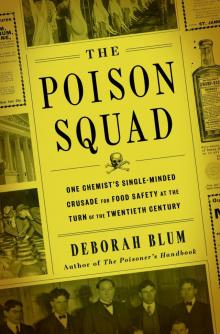 The Poison Squad
The Poison Squad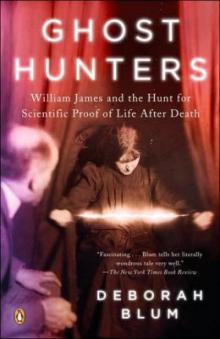 Ghost Hunters: The Victorians and the Hunt for Proof of Life After Death
Ghost Hunters: The Victorians and the Hunt for Proof of Life After Death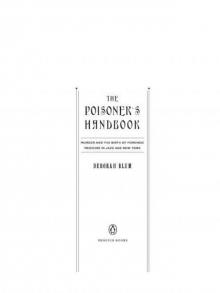 The Poisoner's Handbook
The Poisoner's Handbook Angel Killer
Angel Killer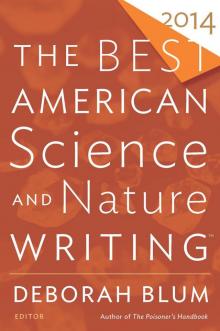 The Best American Science and Nature Writing 2014
The Best American Science and Nature Writing 2014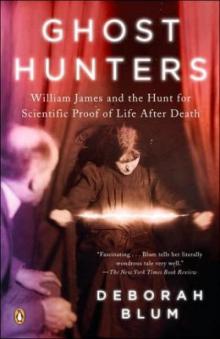 The Ghost Hunters
The Ghost Hunters Love at Goon Park
Love at Goon Park